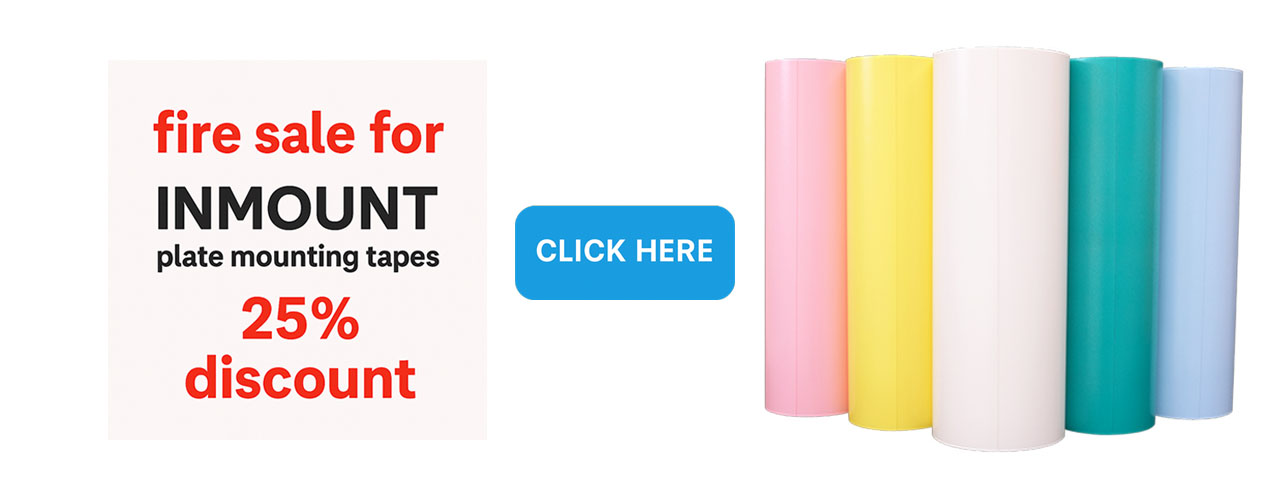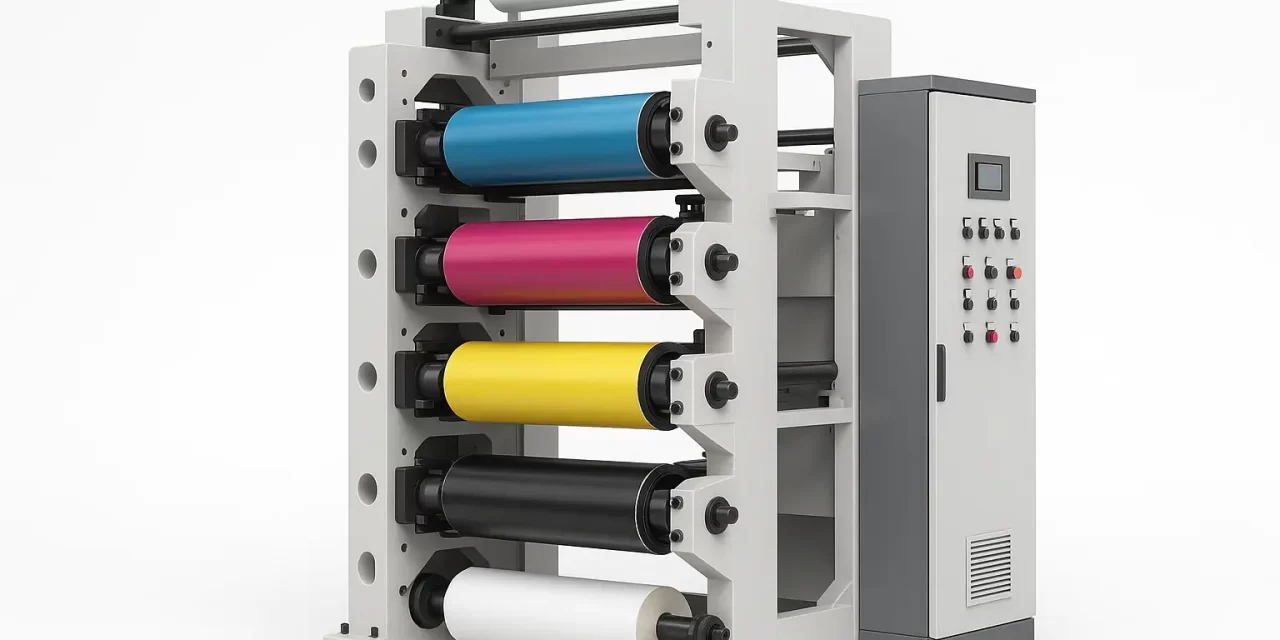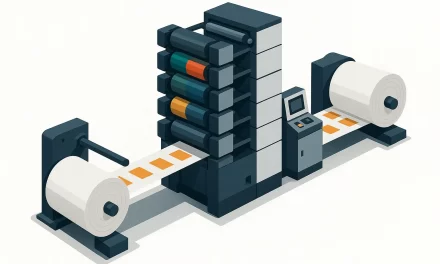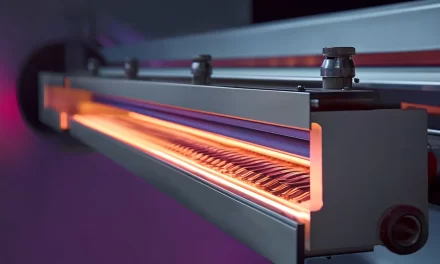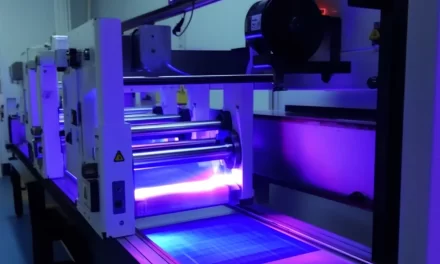In the ever-evolving landscape of flexographic printing, efficiency meets versatility with the advent of multi-deck designs. As packaging trends move toward faster turnarounds, more color complexity, and flexible substrates, flexo presses must rise to meet these demands. Multi-deck configurations are stepping up to the challenge, offering printers a smart, scalable way to handle increasing job complexity without compromising quality.
This comprehensive guide explores multi-deck designs in flexographic printing—what they are, how they work, and why they’re becoming the preferred solution in modern pressrooms around the globe.
What Are Multi-Deck Designs in Flexography?
A multi-deck design in flexographic printing refers to a press configuration that incorporates multiple printing decks (or units) stacked or arranged to allow for simultaneous or sequential printing. Each deck houses its own inking system, anilox roll, plate cylinder, and impression cylinder, enabling the press to apply multiple colors or coatings in a single pass.
These decks can be:
- In-line (horizontal): Positioned one after another in a straight line.
- Stacked (vertical): Layered above one another to save floor space.
- Central impression (CI): Mounted around a common large drum for superior registration.
While each of these has its merits, stacked and CI configurations are most common in multi-deck flexo presses.
Why Multi-Deck Designs Matter in Today’s Print Industry
Modern packaging requirements have grown more complex:
- More SKUs
- Shorter print runs
- Multi-color designs
- Special coatings and varnishes
- Multi-layer constructions
Single-deck presses simply can’t keep up. Multi-deck setups, however, can print up to 10 or more colors, including special effects, varnishes, adhesives, and backside printing—all in one continuous motion.
For converters and brand owners alike, this means:
- Faster time to market
- Higher quality print
- Fewer press setups
- Less waste
Types of Multi-Deck Flexographic Presses
Stack Presses
- Decks are mounted vertically.
- Compact footprint.
- Ideal for paper, board, and bag printing.
- Requires careful web handling.
Central Impression (CI) Presses
- All decks wrap around a central impression drum.
- Offers tight registration.
- Excellent for thin films and flexible packaging.
- Stable web path reduces bouncing and misalignment.
In-Line Presses with Modular Decks
- Flexible layout, allowing easy integration of drying, curing, die-cutting, or lamination stations.
- Better suited for labels and narrow web applications.
- Common in the tag and label sector.
Each configuration can be customized to add auxiliary decks for varnish, cold foil, adhesive, or additional color units as needed.
Key Advantages of Multi-Deck Designs
Expanded Color Capabilities
Modern brands often demand extended gamut or spot color printing. Multi-deck systems allow up to 10–12 color stations, making 7-color process printing (CMYK + OGV) viable without plate changes.
One-Pass Production
With more decks, a job that once required multiple passes can now be completed in one go, reducing setup time and labor costs while improving registration.
Backside Printing and Coating
Additional decks allow reverse-side printing or flood coating without changing press configurations. This is especially useful for:
- Food packaging (barrier coatings)
- Pharmaceutical labels (instructions on reverse)
- Promotional items (invisible inks or scratch-off coatings)
Hybrid Integration
Multi-deck presses can incorporate hybrid technologies like digital units, lamination stations, or gravure modules—giving you the best of multiple processes.
Challenges of Multi-Deck Presses (and How to Solve Them)
While these systems offer great flexibility, they also come with complexity:
Registration Control
With more decks comes more potential for misalignment. Solution:
- Use servo-driven motors for precise movement.
- Integrate real-time registration cameras or closed-loop systems.
Ink Drying Between Stations
More decks mean more ink layers, which can cause smearing or blocking. Solution:
- Invest in high-performance drying systems (hot air, UV, LED).
- Monitor web temperature and tension throughout the run.
Maintenance and Setup Time
Each deck adds to the setup and cleaning workload. Solution:
- Use quick-change sleeves and doctor blade chambers.
- Automate cleaning cycles between jobs.
When Should You Upgrade to a Multi-Deck Design?
You should consider moving to a multi-deck flexo press if:
- You’re consistently running multi-color jobs.
- You require value-added processes (coatings, laminations, adhesives).
- You want to consolidate production steps into fewer passes.
- Your customers demand higher color accuracy and speed.
It’s an investment—but one that pays off through versatility, efficiency, and reduced waste.
Industries Benefiting Most from Multi-Deck Designs
- Flexible Packaging: Film, pouches, shrink sleeves
- Labels and Tags: Prime labels, wine labels, thermal tags
- Corrugated Postprint: High-end boxes, retail-ready packaging
- Tissue and Towels: Decorative patterns, multi-color branding
- Industrial Laminates: Multi-layer applications
In each case, multi-deck presses offer the scale and adaptability required to meet growing consumer and supply chain demands.
Future Trends in Multi-Deck Press Development
Increased Automation
Expect more automated deck alignment, impression setting, and ink metering, reducing reliance on manual intervention and speeding up job changes.
AI-Powered Predictive Maintenance
Some newer models use AI and IoT sensors to monitor deck performance and alert operators before issues arise—preventing downtime.
Modular Deck Add-Ons
Manufacturers now offer field-upgradable deck modules, meaning you can start with 6 decks and expand to 8, 10, or 12 as business grows.
Digital/Flexo Hybrids
Combining flexo with digital inkjet decks allows variable data or personalization on the fly, while still benefiting from high-speed flexo throughput.
Case Study: Multi-Deck Success Story
A packaging printer in Germany upgraded from a 6-color CI press to a 10-color hybrid multi-deck model. Within 6 months:
- Setup time per job dropped 40%
- Color match accuracy improved by 35%
- Waste was reduced by 18%
- Client retention increased due to quicker lead times and improved quality
The added decks enabled them to print both sides of a pouch, apply cold foil, and laminate—all in one pass.
Best Practices for Running Multi-Deck Flexo Presses
- Standardize ink formulations across jobs to reduce setup variance.
- Use automated pre-register systems to speed up color alignment.
- Invest in inline color and defect inspection systems for real-time correction.
- Keep your anilox and plate inventory organized by deck use and job type.
- Always log job settings to replicate successful runs faster in the future.
Conclusion: Multi-Deck Designs Drive Flexo Into the Future
In flexographic printing, multi-deck designs are more than just a trend—they’re a revolution. With the ability to handle more complex jobs, streamline workflows, and satisfy demanding customers, these presses are becoming the go-to choice for printers ready to elevate their game.
Sure, they come with upfront costs and a steeper learning curve. But the rewards? Faster turnarounds, lower waste, expanded capabilities, and the ability to win—and keep—big-name clients.
If you’re serious about growth in the flexo world, it’s time to think beyond single-color decks and embrace the power of multi-deck innovation.

